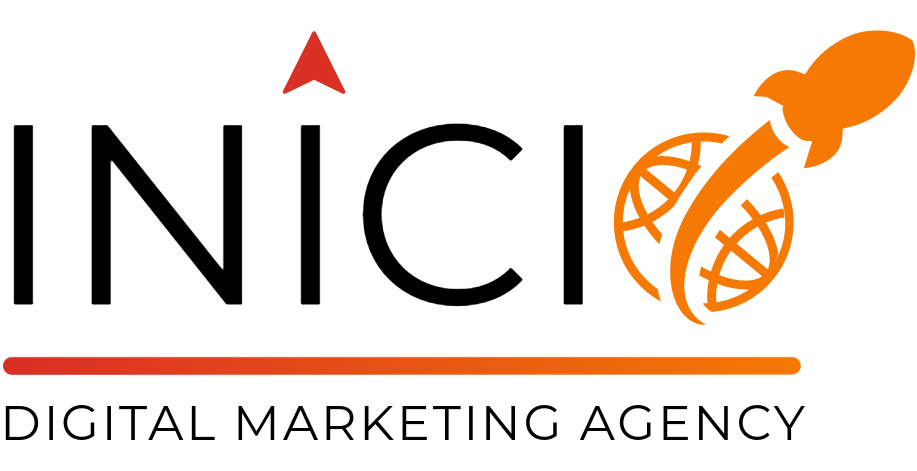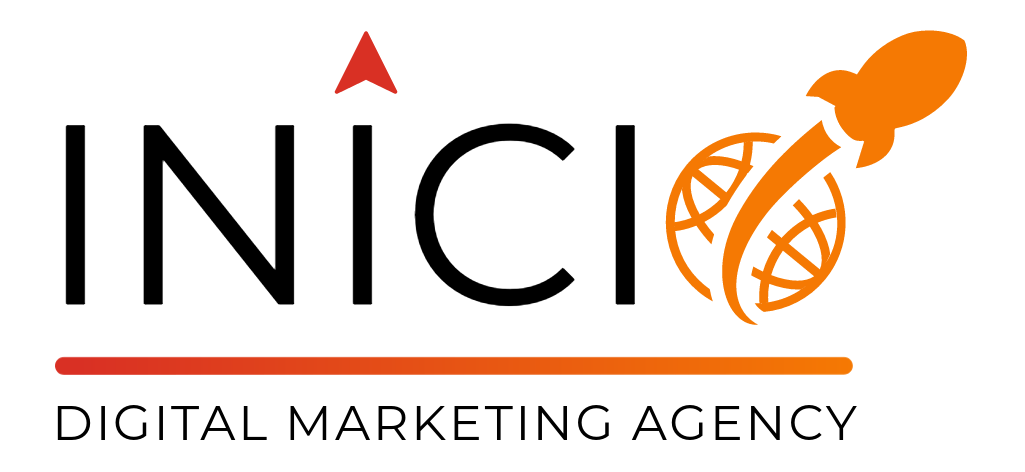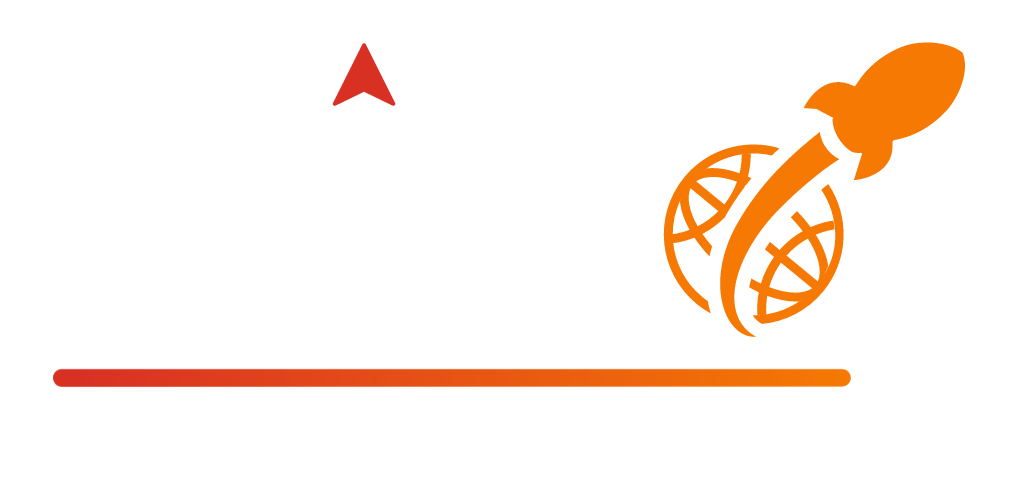Are you looking to understand how to conduct an effective competitor analysis for digital marketers? This guide will break down practical steps and the best competitor analysis tools to help you gain actionable insights on your competitors’ strategies and improve your own marketing efforts.
Key Takeaways
- Competitor analysis is essential for identifying market gaps and formulating effective business strategies.
- Monitoring competitors’ SEO, content strategies, and social media presence provides valuable insights for refining your own marketing efforts.
- Utilizing tools like SEMrush and Ahrefs can enhance competitor analysis and help track performance for continued improvement.
Understanding Competitor Analysis

The significance of competitive analysis is paramount in fostering business prosperity. By conducting a thorough competitor analysis, you can uncover both obstacles and potential openings within the market, ensuring your SEO strategies remain formidable. The insights gleaned from understanding competitors’ tactics can significantly improve the allure and search engine rankings of your own site. Tracking performance across multiple search engines is also crucial to gain comprehensive insights and not just rely on Google. INICIO.ONE provides expert SEO services designed to help businesses analyze competitors effectively and enhance their online visibility.
Delving into the methods employed by competitors serves to reveal unexploited niches that might present new possibilities while also illuminating strategic strengths and shortcomings for considered planning. Such an evaluation procedure is crucial when establishing tangible objectives for your enterprise as well as benchmarks to gauge performance. Being informed about the weaknesses of rivals equips businesses with better foresight in their tactical approaches. With INICIO.ONE’s digital marketing solutions, businesses gain the tools needed to identify gaps and strategize effectively, driving measurable success.
Definition and Importance of Competitor Analysis
Competitor analysis is the process of identifying, analyzing, and evaluating the strengths and weaknesses of your competitors in the market. It is a crucial aspect of digital marketing that helps businesses understand their competitive landscape, identify opportunities and threats, and develop strategies to outperform their rivals. By conducting competitor analysis, businesses can gain valuable insights into their competitors’ strengths, weaknesses, and strategies, which can inform their own marketing decisions and help them stay ahead of the competition.
In the fast-paced world of digital marketing, staying informed about your competitors’ moves is essential. Competitor analysis provides a comprehensive view of the market, allowing businesses to spot trends, anticipate changes, and adapt their strategies accordingly. This proactive approach not only helps in optimizing SEO efforts but also in crafting more effective content strategies and social media campaigns.
INICIO.ONEoffers comprehensive digital marketing solutions, empowering businesses to leverage competitor insights for impactful SEO and engaging content strategies. Ultimately, competitor analysis equips businesses with the knowledge needed to make data-driven decisions and maintain a competitive edge.
Why You Need Competitor Analysis Tools
Competitor analysis tools are essential for businesses that want to stay ahead of the competition. These tools provide valuable insights into competitors’ strategies, strengths, and weaknesses, which can inform marketing decisions and help businesses develop effective strategies to outperform their rivals. With competitor analysis tools, businesses can:
- Identify keyword opportunities and gaps in the market
- Analyze competitors’ content strategies and identify areas for improvement
- Track competitors’ keyword changes and adjust their own strategies accordingly
- Evaluate competitors’ backlink profiles and identify opportunities for link building
- Monitor competitors’ social media presence and engagement
By using competitor analysis tools, businesses can gain a competitive edge and stay ahead of the competition in the ever-changing digital landscape. These tools streamline the process of gathering and analyzing data, making it easier to uncover actionable insights. Whether it’s identifying high-performing keywords, understanding content trends, or tracking social media engagement, competitor analysis tools provide the necessary data to make informed decisions and refine marketing strategies.
Identifying Your Main Competitors

Determine who your direct and indirect competition is. Direct competitors are those who provide products or services similar to yours, whereas indirect ones captivate the same demographic with alternative offerings. The distinct advantages of your product delineate which companies directly vie for the same market share as you do. Exploring customer opinions along with conducting keyword research can bring to light rivals that might not be immediately apparent. Using a free tool for initial competitor identification can also be very helpful.
By executing manual searches and analyzing data from paid advertisements, it’s possible to detect indirect competitors that are involved in pertinent subject matters. Monitoring rival presences on social media platforms yields valuable knowledge regarding their digital marketing maneuvers and how well they engage with their followers. When certain types of content seem particularly effective in generating high levels of engagement within a competitor’s audience base, such insights should be taken into account when developing an impactful content strategy for your own brand. Services like those offered by INICIO.ONE can help businesses analyze social media engagement and craft strategies tailored to outperform competitors.
Choosing the Right Competitor Analysis Tool
Choosing the right competitor analysis tool can be overwhelming, especially with the numerous options available in the market. However, by considering the following factors, businesses can make an informed decision:
- Identify your goals and objectives: What do you want to achieve with competitor analysis? Do you want to identify keyword opportunities, analyze competitors’ content strategies, or track competitors’ keyword changes?
- Evaluate the features and functionalities: What features and functionalities do you need in a competitor analysis tool? Do you need a tool that provides keyword research, backlink analysis, or social media monitoring?
- Consider the pricing and scalability: What is your budget for competitor analysis tools? Do you need a tool that can scale with your business growth?
- Read reviews and ask for recommendations: What do other businesses say about the tool? Do they recommend it?
By considering these factors, businesses can choose the right competitor analysis tool that meets their needs and helps them achieve their goals. The right tool will not only provide the necessary data but also offer insights that are easy to interpret and act upon. This ensures that businesses can continuously refine their strategies and stay competitive in their respective markets.
Analyzing Competitor Keywords
Discover keyword opportunities by pinpointing the keywords for which your competitors rank but you don’t. Observe the high-ranking competitor keywords and identify weaknesses in their strategy to enhance your own keyword targeting efforts. Utilizing SEO tools can shed light on how competitors are ranked for analogous keywords, assisting you in sharpening your digital strategy.
Monitoring changes in competitor keyword standings is crucial to adapt your approach and maintain a competitive edge. Examining the leading keywords of competitors may expose deficiencies or alterations within their digital tactics.
Concentrate on nascent keywords to capture attention from early adopters and boost your website’s credibility in rapidly evolving sectors.
Identify Keyword Opportunities
Identifying keyword opportunities is a crucial aspect of competitor analysis. By analyzing competitors’ keyword strategies, businesses can identify gaps in the market and develop effective keyword research strategies. Here are some tips for identifying keyword opportunities:
- Use keyword research tools: Tools like Ahrefs, SEMrush, and Moz provide valuable insights into competitors’ keyword strategies.
- Analyze competitors’ content: Analyze competitors’ content and identify the keywords they are targeting.
- Identify long-tail keywords: Long-tail keywords are less competitive and more specific, making them easier to rank for.
- Use keyword clustering: Group related keywords together to identify patterns and opportunities.
By identifying keyword opportunities, businesses can develop effective keyword research strategies and improve their search engine rankings. This process helps in uncovering high-potential keywords that competitors might be overlooking, allowing businesses to capture more organic traffic and enhance their online visibility.
Tracking Competitor Keyword Changes
Tracking competitor keyword changes is essential for staying ahead of the competition. By monitoring competitors’ keyword strategies, businesses can identify changes and adjust their own strategies accordingly. Here are some tips for tracking competitor keyword changes:
- Use keyword tracking tools: Tools like Ahrefs, SEMrush, and Moz provide valuable insights into competitors’ keyword strategies.
- Set up keyword alerts: Set up keyword alerts to notify you of changes in competitors’ keyword strategies.
- Analyze competitors’ content: Analyze competitors’ content and identify changes in their keyword strategies.
- Use keyword clustering: Group related keywords together to identify patterns and opportunities.
By tracking competitor keyword changes, businesses can stay ahead of the competition and adjust their strategies to stay competitive. This ongoing monitoring ensures that businesses can quickly respond to shifts in the market and maintain their search engine rankings. It also provides valuable insights into emerging trends and new opportunities for keyword optimization.
Evaluating Competitors’ Content Strategies

Competitor content analysis reveals insights that aid in refining your content and SEO strategy. By checking the content competitors publish, you can discover successful keywords and audience preferences. High domain authority indicates that a competitor is viewed as a trusted resource by search engines, correlating with content quality. Continuous monitoring of competitors’ content is crucial to observe new tricks and maintain competitive parity. Evaluating competitors’ content can provide valuable insight into effective strategies.
Competitors’ content analysis can uncover industry trends that guide your content direction. We will explore content formats, quality, and meta information for a comprehensive view of content strategies.
Content Formats
Competitors use various content formats like blogs, infographics, videos, and podcasts to engage their audience. Different content formats serve unique purposes and appeal to various audience segments, essential for effective marketing. For instance, video content is often used to provide quick tips, making it an effective tool for delivering concise information to viewers. If competitors have a successful podcast series, it may be beneficial to consider starting your own audio content to engage audiences.
Competitors enhance readability with simple language, short sentences, and clear paragraphs, making content more accessible. BuzzSumo offers insights into competitors’ content success, enabling analysis of trending topics and engagement metrics.
Content Quality
Before:
Assessing competitors’ content quality involves checking the depth, engagement, relevance, publishing frequency, and identifying content gaps. Assess competitors’ content by considering depth, engagement, and relevance. Simplifying language and structure can significantly improve engagement and content quality.
After:
Assessing competitors’ content quality involves checking:
- Depth
- Engagement
- Relevance
- Publishing frequency
- Identifying content gaps
Simplifying language and structure can significantly improve engagement and content quality.
Tools like Flesch Reading. Ease measure content readability, aiding quality assessment. Analyzing competitors’ top content helps understand what works for their audience.
Meta Information
Incorporating pertinent keywords into meta titles is essential for boosting click-through rates. These elements are vital in optimizing for search engines and increasing visibility within search results.
Examining the meta information used by competitors can provide an understanding of their SEO tactics, which could be instrumental in refining your own meta descriptions and titles.
Backlink Analysis

Backlinks serve as online endorsements that heighten a site’s credibility with search engines. Unveiling which entities link to your competition can shed light on their digital footprint and strategies for building links. The caliber of backlinks has a substantial effect on the position in search engine rankings, playing an essential role in amplifying online visibility.
Securing links from sites with high authority carries more weight than acquiring numerous links from less recognized sources. Examining competitors’ backlink profiles is crucial for gauging the robustness of their SEO efforts. Engaging in this examination is imperative for thorough analysis. Analytical tools such as Ahrefs and Majestic are instrumental in scrutinizing these competitor backlink profiles and pinpointing opportunities to foster link-building endeavors.
Monitoring Competitors’ Social Media Presence
Understanding competitors’ social media actions can reveal weaknesses in your own marketing strategy. Monitoring mentions of specific keywords, trends, topics, or brands helps gauge competitors’ social media presence. Social media presence and engagement offer additional insights into a competitor’s reach and influence.
Observing which content resonates with the audience helps refine your content strategy. Tools like Social Blade provide insights on follower growth, engagement metrics, and brand comparisons.
Analyzing a competitor’s website can provide ideas for content, keywords, and backlink outreach opportunities.
Social Media Platforms
Understanding how rivals engage with their audiences on social media platforms requires recognizing the distinctive ways in which they utilize these channels. Grasping competitors’ approaches involves pinpointing their principal influencers.
Utilizing tools like BuzzSumo can reveal which influencers are collaborating with your competitors or promoting their content. This insight is valuable for refining your own social media strategies and forging connections with those key influencers.
Audience Insights
Recognizing the demographic makeup of your audience is crucial in crafting marketing approaches that hit their mark. Tools designed for competitor analysis can shed light on what captivates a rival’s followers, giving you a sneak peek into their interests and activities. By dissecting how audiences interact with competitors on social media platforms, one can discern which aspects are successful in appealing to certain demographics and pinpoint developing trends within the marketing realm.
Such knowledge becomes essential when honing your content strategy to align better with the preferences of your intended consumers. Awareness of what captures the interest of your competitors’ audience grants useful perspectives that can guide and enhance your own initiatives in content creation.
Content Engagement
Focus on metrics such as likes, shares, and comments to measure the level of engagement with your competitors’ content. By enhancing the readability of your content, you can increase user interaction and keep visitors engaged for extended periods.
Examine which types of content are receiving the most interactions to gain essential insights that can inform strategic changes. Utilize this information to refine your content strategy with the aim of achieving improved engagement and higher retention rates.
Evaluating Technical SEO Elements
Technical SEO is a critical component when conducting competitor analysis as it reveals opportunities to refine your own strategy. It’s essential to consistently evaluate elements such as site speed, which is fundamental in preserving a competitive edge. The adoption of responsive design guarantees optimal functionality across different mobile platforms, which is key for user retention.
Having a well-organized and clear URL structure aids both users and search engines in grasping the content of pages with greater clarity. Implementing schema markup can significantly boost presence within search results by aiding search engines in comprehending page content more effectively.
Tracking Competitors’ Paid Search Strategies

Tools for competitor analysis such as Semrush and SpyFu are instrumental in uncovering the effectiveness of competitors’ strategies, providing extensive historical insights into their advertising results. It’s crucial to recognize both direct and indirect rivals when conducting a comprehensive PPC competitor analysis.
Understanding the cost-per-click (CPC) employed by your competition can inform how you approach your bidding tactics. By evaluating fundamental performance indicators, including click-through rates (CTR) and conversion rates alongside those of your competitors, you can continually refine your PPC strategies through ongoing review and optimization.
Tools for Comprehensive Competitor Analysis
Tools for competitor analysis are crucial in uncovering strategies to surpass your market competitors. Utilizing the best competitor analysis tools, such as those provided by Semrush, can offer valuable insights into rivals’ strategies and customer attraction methods. Services like Semrush provide a collection of top-notch competitor analysis tools, which encompass SEO competitor analysis tools specifically. There exists a plethora of instruments, including Mailcharts for evaluating email metrics and SpyFu for keyword research, each serving as the appropriate competitor analysis tool according to different needs.
Instruments like Kompyte deliver real-time insights concerning the maneuvers and achievements of rivals. They enable the monitoring of both paid campaigns and organic strategies employed by competitors. By analyzing these metrics alongside those of adversaries, strengths can be pinpointed along with potential areas that require enhancement.
SEMrush
SEMrush serves as a unified platform for conducting competitor analysis, tailored for professionals in digital marketing. This tool presents an extensive Domain Overview that encapsulates both organic and paid search traffic data, coupled with insights into competitors’ strategies. By utilizing SEMrush’s Domain Overview, users have the capability to scrutinize their rivals’ domain growth trends, traffic from searches, as well as their backlink profiles.
The array of information offered by SEMrush through its Domain Overview assists marketers in thorough competitive analysis endeavors. It provides a wealth of competitive intelligence tools including Traffic Analytics and Organic Research alongside pivotal features like Keyword Gap and Backlink Gap analyses to form an encompassing perspective on every domain examined.
Ahrefs
Ahrefs stands out in the realm of backlink analysis by offering vital information for assessing competitive landscapes. Its substantial index of backlinks positions it as a top selection for conducting thorough backlink investigations. To its prowess in analyzing backlinks, Ahrefs is also adept at monitoring keywords, thereby allowing marketers to discover invaluable insights.
Starting at a monthly rate of $129, Ahrefs provides users with an all-encompassing suite of tools and functionalities.
BuzzSumo
Known for its ability to scrutinize the content strategies of rivals, BuzzSumo delivers insightful information on their success measures and methods. The service is available starting at a monthly rate of $199 and boasts an exclusive feature that aids in tracking digital reputations.
Excelling in evaluating how content fares and pinpointing influencers associated with competition, BuzzSumo facilitates comprehension of the type of material that engages your target audience while also identifying key influencers capable of expanding your visibility.
Turning Competitor Weaknesses Into Strengths
In the competitive landscape of digital marketing, identifying and leveraging competitors’ weaknesses can be a game-changer for your business strategy. By scrutinizing the gaps and shortcomings in your competitors’ approaches, you can craft strategies that capitalize on these vulnerabilities, transforming them into your strengths. This involves a deep dive into their content strategies, SEO tactics, and social media engagement to identify areas where they fall short.
For instance, if a competitor lacks engaging content on certain trending topics, you can seize this opportunity to create high-quality, engaging content that resonates with your target audience. Similarly, if their backlink profile reveals a lack of connections with authoritative sites, you can focus on building quality links to boost your domain authority.
Utilizing competitor analysis tools like SEMrush and Ahrefs allows you to gain detailed insights into these weaknesses, providing a roadmap to enhance your own digital strategy. By continuously monitoring and adapting to these insights, you can maintain a competitive edge and drive your business towards success.
Data-Driven Decision Making
Incorporating data-driven decision-making into your digital marketing strategy is essential for achieving success. By leveraging competitor analysis tools, businesses can gather valuable insights that inform their strategies, ensuring they are aligned with market trends and consumer behavior. This approach allows marketers to make informed choices, optimize their campaigns, and stay ahead of the competition. With detailed insights from tools like SEMrush and Ahrefs, businesses can adapt their strategies in real-time, enhancing their ability to capture market share and drive growth.
Regular Monitoring Practices
Continuously monitoring competitors is crucial for adjusting strategies in light of their successes and failures. By conducting ongoing competitive analysis, one can detect market trends that may impact strategic decision-making for your business. Identifying gaps or shortcomings within rival content strategies could open doors for your brand’s advancement, while observing the most interactive content yields essential information to inform potential strategy changes.
Utilizing tools such as SEMrush and Ahrefs facilitates thorough surveillance of competition, which aids in refining tactics across various search engines. Google Alerts serves as a handy resource providing cost-free updates on competitor mentions and trending topics promptly.
How INICIO.ONE Enhances Competitor Analysis
INICIO.ONE specializes in providing cutting-edge tools and strategies for effective competitor analysis, empowering digital marketers to stay ahead in a competitive landscape. By identifying key market trends, analyzing competitor tactics, and uncovering untapped opportunities, INICIO.ONE ensures your SEO, content strategies, and social media campaigns are always optimized for success. With tailored insights, businesses can make data-driven decisions to enhance visibility and maintain a competitive edge.
Summary
Summarize the key points of the article, emphasizing the importance of competitor analysis in staying ahead of the competition. Highlight the tools and strategies discussed, encouraging readers to implement these practices in their own digital marketing efforts. Conclude with an inspiring note, motivating readers to take actionable steps toward effective competitor analysis.
Frequently Asked Questions
Why is competitor analysis important for digital marketing?** **?
Competitor analysis is essential for digital marketing as it uncovers market barriers and opportunities, enabling you to optimize your SEO strategies and stay ahead of the competition.
By understanding your rivals, you can make informed decisions that enhance your overall marketing performance.
How can I identify my main competitors?** **?
To identify your main competitors, assess your product’s unique value and conduct keyword research to analyze search results for direct and indirect competitors.
This approach will provide a clear picture of the competitive landscape in your market.
What tools are best for analyzing competitor keywords?** **?
SEMrush, Ahrefs, and BuzzSumo are the best tools for analyzing competitor keywords, allowing you to identify keyword gaps and monitor competitor strategies effectively.
Using these tools will enhance your keyword research and SEO strategy.
How do I assess the quality of competitors’ content?** **?
To assess your competitors’ content quality, evaluate factors such as depth, engagement, relevance, and publishing frequency, while also identifying potential content gaps.
Utilizing tools like Flesch Reading Ease can further enhance your analysis of readability.
What should I monitor in competitors’ social media presence?** **?
You should monitor keywords, trends, and topics related to your competitors, as well as their engagement metrics such as likes, shares, and comments.
Tools like Social Blade can provide valuable insights into their follower growth and overall engagement.




